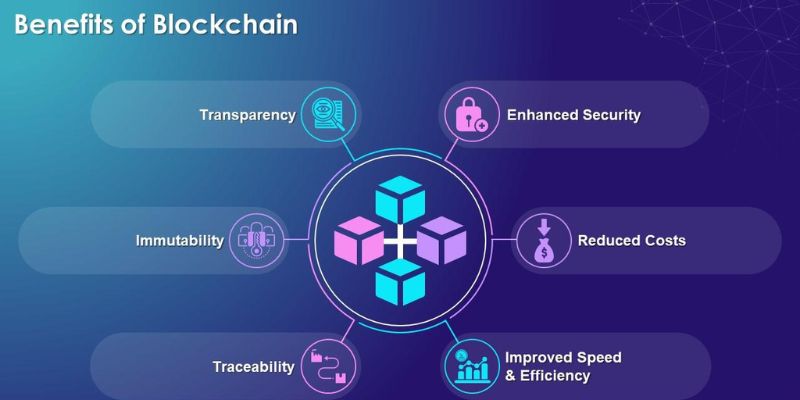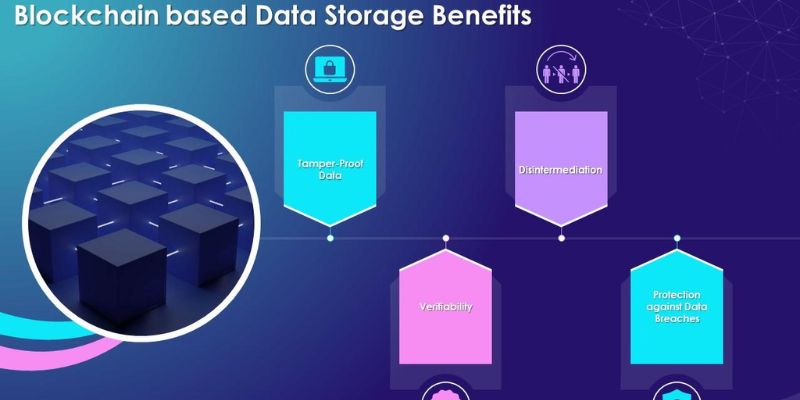One of the fundamental characteristics of blockchain technology is its ability to distribute and store data across multiple transparent ledgers, as opposed to centralized databases often seen in Web2 architectures. By dispersing transaction records globally, blockchains have revolutionized data ownership, access, and storage. However, this design is not without its challenges. As data becomes duplicated across nodes, it poses a growing storage problem, leading to scalability, performance, and availability issues.
The issue of storage is a widely discussed challenge within the blockchain community. Each transaction executed on a blockchain is recorded and preserved on the network’s ledger. As the number of transactions grows, more data is generated, requiring an increase in storage capacity. Additionally, blockchains are immutable, meaning that data is never deleted from the ledger, resulting in continuous storage growth.
In this article, we will delve into the storage constraints faced by blockchains and explore potential solutions to address this problem.
Where is blockchain data stored?

Blockchain data is hosted on globally distributed machines known as nodes. These nodes run software to validate and store information about the network’s state. Various types of nodes serve different functions, with some retaining a full copy of the ledger while others store only the most recent blocks. Although node architectures may vary across networks, a full node typically stores the entire network state, which encompasses the complete history of transactions executed on the blockchain. Running a network node requires meeting minimum hardware requirements. For example, Bitcoin mandates a device to have at least 500 GB of free storage space with a minimum read/write speed of 100 MB/s to run a node.
Why does the blockchain storage problem exist?
According to Ethereum co-founder Vitalik Buterin, storage limitations present a significant challenge to blockchain scalability. In an ideal scenario, a more significant number of users would run their own nodes on blockchain networks. However, this requires substantial hardware and bandwidth resources, which are often too costly for the average user. A glance at Etherscan reveals that the Ethereum network has had an average of fewer than 10,000 nodes over the past 30 days. This raises concerns about computational limits for blockchains and the potential decentralization of networks in the future.
The increasing hardware requirements have led to the emergence of specialized projects that provide blockchain nodes as a service. Infura and Alchemy are two prominent projects that maintain nodes for Web3 protocols and developers. However, these services have raised concerns, as they centralize blockchain data in the hands of specialized providers, thereby creating single points of failure (SPOF) and privacy risks.
Viable solutions to the growing blockchain storage problem

Several solutions have been developed to tackle the blockchain storage problem, including:
- Sharding: Sharding is an optimization technique that involves partitioning the blockchain workload into multiple shards, each with dedicated nodes focusing on specific data types. By doing so, other nodes can focus on computational tasks, reducing the amount of storage space required for the distributed ledger. The critical advantage of sharding is that it increases on-chain storage capacity without relying on third-party services like Infura. This ensures that storage capacity does not compromise decentralization, while also mitigating the network’s attack surface. However, sharding has its limitations in fully resolving the storage problem.
- Pruning: Another approach to improving on-chain storage is pruning, which involves locally removing older or less relevant information from specific node categories. Pruning frees up storage by eliminating older transactional data, making it possible for more individuals to run nodes without strict hardware requirements. However, pruning carries certain risks. For instance, if an attacker targeted a pruned older block, it could compromise the entire network.
Blockchains are designed to be fault-tolerant systems, ensuring high availability even if some network participants are absent. However, severe limitations on on-chain storage can significantly impact network performance. As transaction data grows, so does the need for storage. Achieving decentralization amidst this increasing demand requires a highly distributed infrastructure that remains affordable for users. Lowering hardware requirements enables blockchains to achieve enhanced security and decentralization.
FAQs
What are the challenges posed by blockchain storage?
Blockchain storage presents challenges in scalability, performance, and availability. As data is duplicated across nodes, storage capacity must expand to accommodate an increasing number of transactions. Additionally, the immutability of blockchains means that data is never deleted from the ledger, contributing to continuous storage growth.
How is blockchain data stored?
Blockchain data is stored on globally distributed machines called nodes. Different types of nodes serve different functions, with some retaining a complete copy of the ledger and others storing only the most recent blocks. Full nodes typically store the entire network state, encompassing the complete transaction history.
What are some potential solutions to the blockchain storage problem?
Two potential solutions to the blockchain storage problem are sharding and pruning. Sharding involves partitioning the workload into multiple shards, reducing the storage space required for each node. Pruning involves locally removing older or less relevant data, freeing up storage and enabling more individuals to run nodes.
In conclusion, the storage problem is a pressing issue within the blockchain industry. As networks grow, the need for scalable and efficient storage solutions becomes evident. Sharding and pruning offer potential methods to address this challenge, balancing storage capacity, decentralization, and network performance. By continually exploring innovative solutions, blockchain technology can overcome its storage limitations and unlock its full potential.



